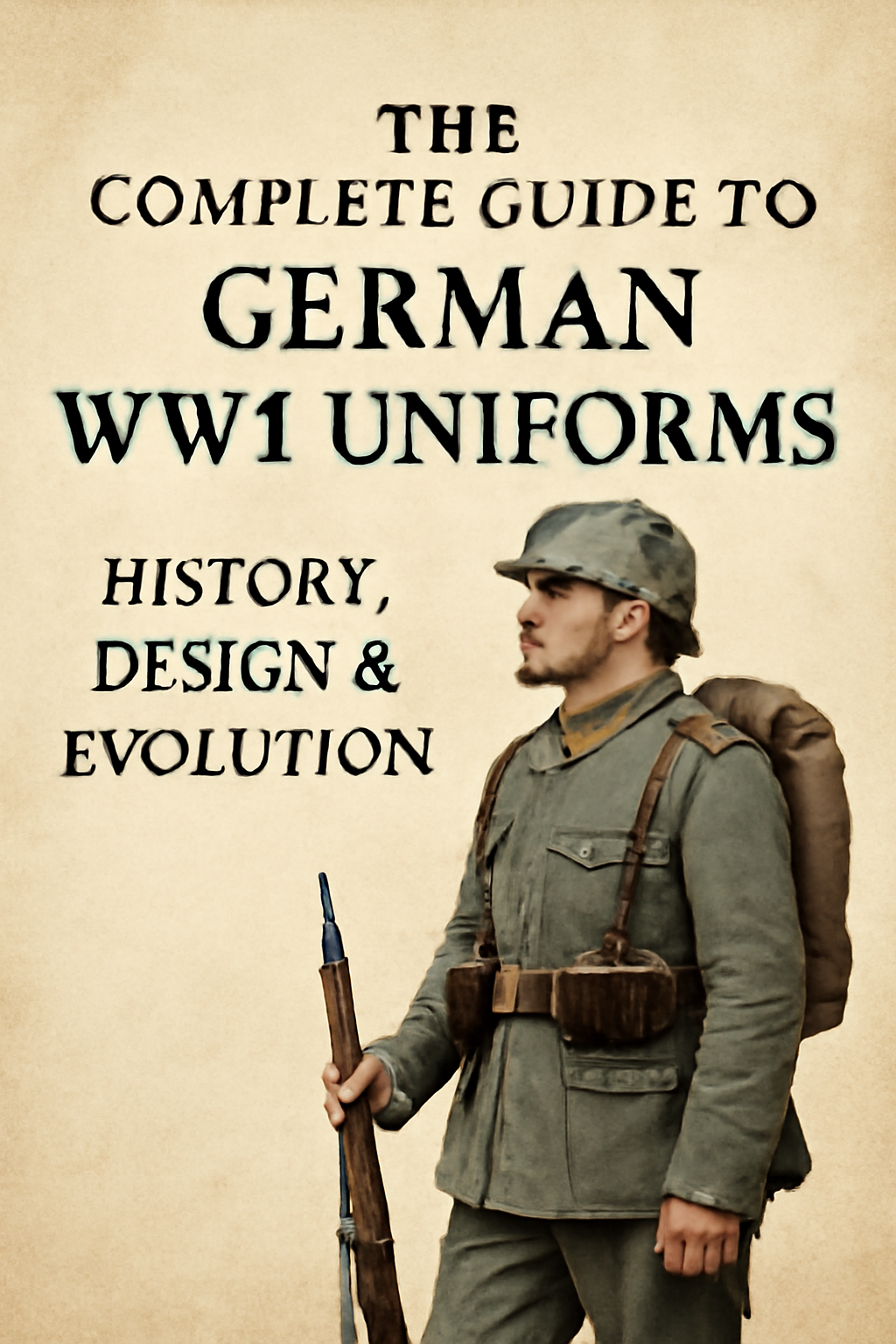
The Complete Guide to German WW1 Uniforms: History, Design & Evolution
Published on May 30, 2025
The Complete Guide to German WW1 Uniforms: History, Design & Evolution
The German military uniform of World War I stands as one of the most iconic and studied aspects of early 20th-century warfare. From the distinct design elements to the practical uses on the battlefield, the German WW1 uniform tells a fascinating story of military tradition, innovation, and identity. Whether you are a history enthusiast, a collector, or simply curious, understanding the German WW1 uniform unlocks insights into the broader context of both World Wars.
In this article, we will explore the WW1 German uniform, including the differences in officer uniforms and how these evolved into related items like the WW2 German shoulder boards and the infamous German Gestapo uniform. We’ll also touch on the distinct characteristics of the SS officer uniform that came later.
Understanding the WW1 German Uniform: An Overview
The German Empire entered WW1 with a strong military tradition, reflected deeply in the uniform design. The standard German soldier’s uniform (or “feldgrau”) was made from durable wool dyed in a field-grey colour, which was intended to provide better camouflage on the battlefield compared to the bright colours worn in earlier conflicts.
Key Features of the WW1 German Uniform
- Colour and Fabric: The hallmark of the German WW1 uniform was the field-grey wool fabric, which balanced durability with concealment.
- Tunic: The standard tunic had a high collar, often displaying regimental insignia, and featured five buttons down the front.
- Trousers: Made from the same grey fabric, the trousers were straight-cut and worn tucked into sturdy leather boots.
- Headgear: The iconic Pickelhaube, a spiked helmet, was initially the most recognizable German headgear but was gradually replaced by the more practical Stahlhelm helmet as the war progressed.
- Equipment: Soldiers were equipped with belts, bayonet holders, and ammunition pouches designed for both functionality and battlefield readiness.
WW1 German Officer Uniforms: Distinction and Prestige
Officers in the German army wore uniforms that were both functional and symbolized rank and authority. The WW1 German officer uniform often featured more elaborate details compared to the standard enlisted men’s attire.
What Set Officers Apart?
- Materials: Officers’ uniforms were typically made from finer wool and tailored to fit.
- Details: Silver or gold piping, embroidered rank insignia on the collar and cuffs, and polished buttons distinguished officers.
- Headgear: Officers wore a variety of caps, including the peaked cap (Schirmmütze), and sometimes retained the Pickelhaube with added ornamentation.
- Shoulder Boards: Shoulder boards were used extensively to indicate rank, with the design becoming increasingly complex as ranks rose.
The Evolution into WW2: German Shoulder Boards and Beyond
Though rooted in WWI traditions, German military uniforms evolved significantly during WWII. One key feature that persisted and gained further prominence was the WW2 German shoulder boards.
What Are German Shoulder Boards?
Shoulder boards served as rank insignia for officers and enlisted personnel alike. During WW2, they became more elaborate, often incorporating different colours, braid patterns, and metallic thread to distinguish branches such as infantry, artillery, or SS units.
The German Gestapo Uniform and the SS Officer Uniform
Moving beyond frontline combat uniforms, the German Gestapo uniform and SS officer uniform represent a darker and highly politicized chapter of German military and paramilitary dress history.
German Gestapo Uniform
- Typically black or dark grey, these uniforms were designed for intimidation and authority.
- The insignia often included the eagle and swastika, and the uniforms were less about battlefield practicality and more about symbolic power.
SS Officer Uniform
- Recognizable by their black or field-grey colours, SS officer uniforms featured distinctive SS runes and elaborate shoulder boards.
- The SS uniform combined elements of military precision with the ideological messaging central to the Nazi regime.
Why Collectors and Historians Value WW1 German Uniforms
The historical significance and distinctive style of the German WW1 uniform make it a prized item for collectors and historians. It represents a turning point in military fashion where functionality and emerging technologies shaped design. Moreover, studying these uniforms helps us understand how military culture and identity evolve across different conflicts.
Conclusion
The German WW1 uniform remains a powerful emblem of early 20th-century military history, reflecting both the practical demands of warfare and the cultural identity of the German Empire. Understanding the details of the standard infantry attire, officer uniforms, and their evolution into WWII elements like shoulder boards and SS insignia offers invaluable insight for historians, collectors, and enthusiasts alike. Whether you are drawn to craftsmanship and historical significance or want to deepen your knowledge of military apparel, the legacy of German military uniforms from WW1 through WWII continues to fascinate and educate. For authentic gear, detailed information, and expert resources on these iconic uniforms, be sure to explore Paddelaters.com, your trusted source for war-related uniforms and collectibles.
